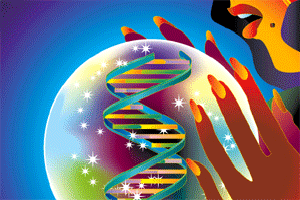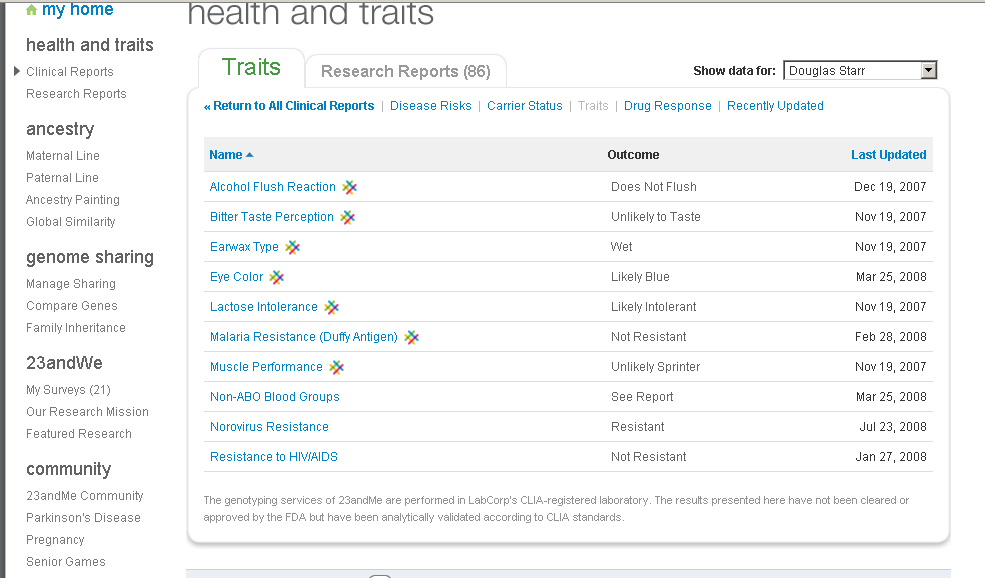As you can see, some of this is pretty obvious…I know my eye color for example. It is kind of cool to see my blue eyes written in my DNA but not necessarily that helpful. When I click on eye color, I find out that people with this particular bit of DNA have a 72% chance for blue eyes, a 27% chance for green and a 1% for brown. (Incidentally, this 1% brown is probably a big reason why blue-eyed parents can have a brown-eyed child.)
What would have made this report more interesting for me is what it meant for my kids’ eye color. Does it mean I’ll have blue-eyed kids? This of course depends on my wife’s genes but it would be cool to have the option of including my wife’s data to find out.
Other less obvious traits were very interesting to me. The results say that like most mammals, I should be lactose intolerant. Which I am not—I’m fine drinking milk. So did 23andMe get it wrong?
Probably not. The science is pretty good on this topic. People with a certain difference in their lactase gene almost always lose the ability to make lactase as adults. No lactase means lactose intolerance.
When I dug deeper on the website I got some hand waving about other genetic influences or the environment. A better explanation is that I will probably become lactose intolerant at some point in my adult life—it just hasn’t happened yet.
Losing the ability to make lactase is a gradual thing. It happens to some people early in adulthood and others later on. I am probably one of the “later ons.” Something to look forward to…
One trait that I’ve always been a bit interested in is HIV resistance. Some people are more resistant to infection by HIV (the virus that causes AIDS). If these people do become infected, they tend to develop AIDS symptoms much more slowly as well.
In Europeans at least, this resistance has been tied to a DNA difference called CCR5-delta32. The people who are resistant to infection and who develop AIDS more gradually tend to have two copies of this DNA difference.
This DNA difference has been proposed to have become common in Europeans because it also makes people resistant to either the plague or smallpox. If true, my ancestors must have died like flies from the plague or smallpox because I don’t have the DNA difference.
I also now know about what my DNA tells me about my earwax, how I respond to a certain bitter chemical, and whether I flush from alcohol. These are sort of interesting but not very.
This part of the 23andMe experience is kind of fun though. I really enjoy it when genetic theory matches up with what I can see about me. It sort of validates genetics…
37.7749295 -122.4194155
 "Mysteries of DNA" image courtesy Mark H. Adams. Full-size version.
"Mysteries of DNA" image courtesy Mark H. Adams. Full-size version.
